Extensive Heterogeneity and Intrinsic Variation in Spatial Genome Organization
- PMID: 30799036
- PMCID: PMC6408223
- DOI: 10.1016/j.cell.2019.01.020
Extensive Heterogeneity and Intrinsic Variation in Spatial Genome Organization
Abstract
Several general principles of global 3D genome organization have recently been established, including non-random positioning of chromosomes and genes in the cell nucleus, distinct chromatin compartments, and topologically associating domains (TADs). However, the extent and nature of cell-to-cell and cell-intrinsic variability in genome architecture are still poorly characterized. Here, we systematically probe heterogeneity in genome organization. High-throughput optical mapping of several hundred intra-chromosomal interactions in individual human fibroblasts demonstrates low association frequencies, which are determined by genomic distance, higher-order chromatin architecture, and chromatin environment. The structure of TADs is variable between individual cells, and inter-TAD associations are common. Furthermore, single-cell analysis reveals independent behavior of individual alleles in single nuclei. Our observations reveal extensive variability and heterogeneity in genome organization at the level of individual alleles and demonstrate the coexistence of a broad spectrum of genome configurations in a cell population.
Published by Elsevier Inc.
Conflict of interest statement
DECLARATION OF INTERESTS
The authors declare no competing interests.
Figures
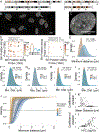
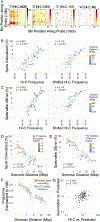
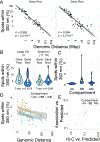

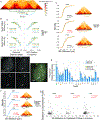
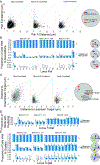
Comment in
-
Erratic loci relationships.Nat Rev Mol Cell Biol. 2019 Apr;20(4):196-197. doi: 10.1038/s41580-019-0115-5. Nat Rev Mol Cell Biol. 2019. PMID: 30833794 No abstract available.
References
-
- Abdennur N, Goloborodko A, Imakaev M, and Mirny L (2017). Mirnylab/cooler v0.7.6 (Version 0.7.6). Zenodo 10.5281/zenodo.1039971 - DOI
Publication types
MeSH terms
Substances
Grants and funding
LinkOut - more resources
Full Text Sources
Other Literature Sources
Molecular Biology Databases

